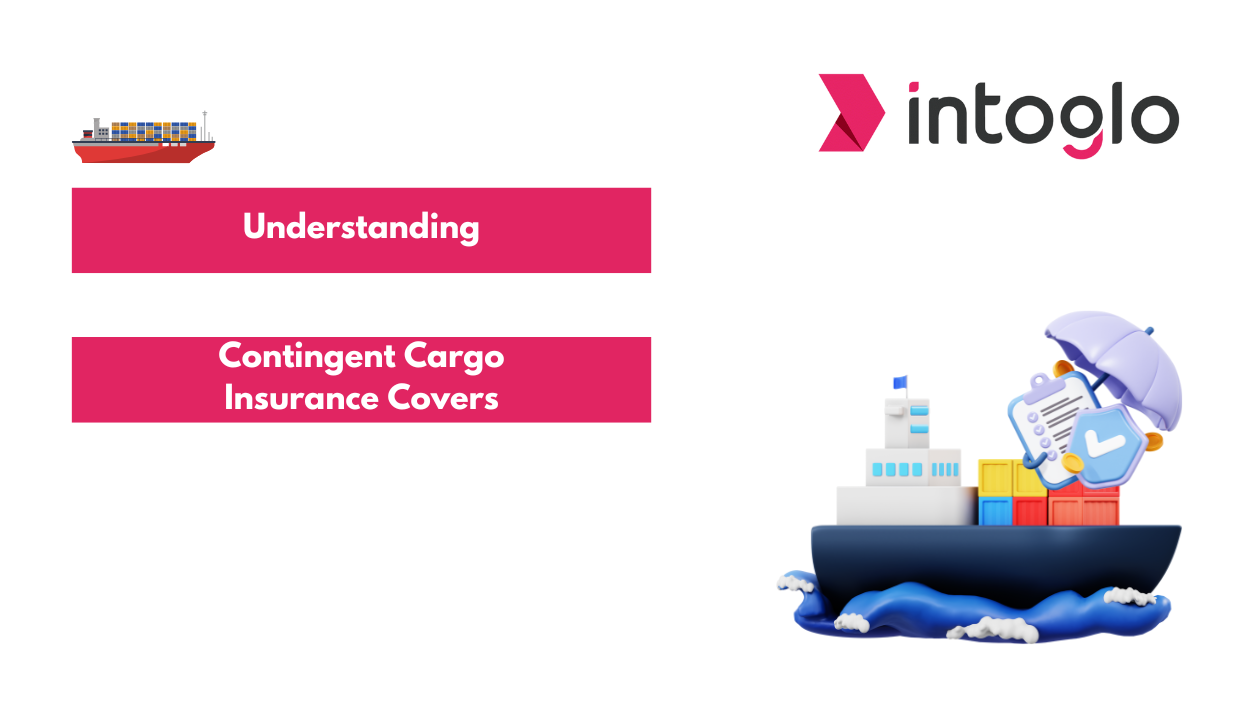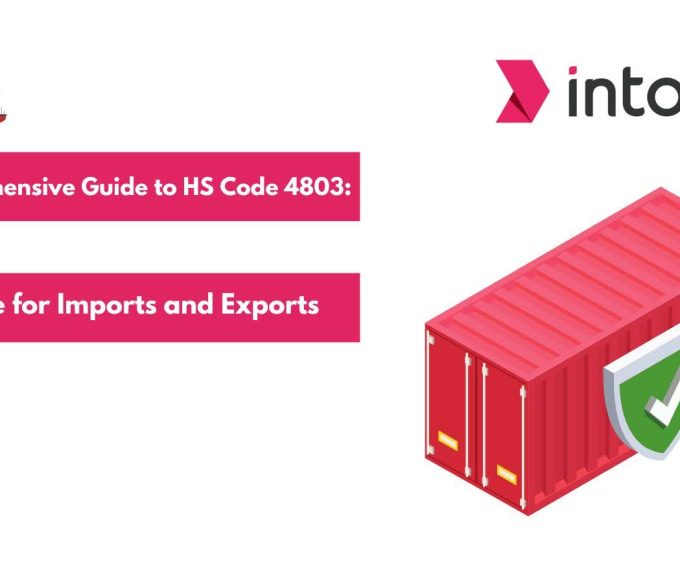When shipping goods internationally, especially with ocean freight, having the right insurance is essential. But what happens when your primary cargo insurance doesn’t cover certain risks? That’s where contingent cargo insurance steps in as a reliable backup. This specialized policy was introduced in the 1980s with additional protection when standard cargo insurance fell short, covering risks like physical damage, theft, and unexpected delays.
For shippers moving valuable cargo from India to the USA, understanding what contingent cargo insurance is and how it safeguards your shipment can make a huge difference in risk management. Explore what this insurance covers, why it’s critical, and how it can complement your primary policy.
Overview of Contingent Cargo Insurance
What is contingent cargo insurance, and why does it matter for your shipments? In simple terms, contingent cargo insurance is a secondary insurance policy designed to step in when primary cargo insurance doesn’t fully cover losses. Consider it a backup plan: when your main policy has exclusions or limitations, contingent insurance can protect you from unexpected costs associated with risks like physical damage, theft, or even delays. This type of insurance is especially valuable for shippers who frequently transport high-value goods internationally, where uncontrollable factors can put cargo at risk.
The significance of contingent cargo insurance lies in its role as a complementary safety net. While primary insurance may cover the basics, contingent insurance fills in the gaps, ensuring comprehensive coverage for your shipment. It provides peace of mind, knowing that if the unexpected happens, your cargo is protected, preventing financial loss and safeguarding business continuity.
Coverage Inclusions
When protecting your cargo, contingent cargo insurance offers a broad safety net, covering various losses that could otherwise disrupt your shipment. Here’s what’s typically included:
Types of Losses Covered
Contingent cargo insurance covers various losses that may not be included in a standard cargo insurance policy. Here’s a closer look at the specific types of losses it typically covers:
- Physical Damage: During transit, goods are often exposed to handling risks, environmental factors, and sometimes unpredictable sea conditions. Contingent cargo insurance covers physical damage, providing compensation if your shipment is harmed by rough handling, shifting during transit, or exposure to adverse weather. This coverage ensures that your investment is protected even in unexpected damage.
- Theft: Theft is a significant concern for shippers, especially when transporting high-value items internationally. Contingent cargo insurance can cover the resulting loss if your cargo is stolen during any leg of the journey. This safeguard is particularly valuable when shipping to or from regions where cargo theft is common, offering reassurance that you’re protected if theft occurs.
- Loss Due to Insufficient Coverage: Sometimes, a carrier’s policy falls short in terms of coverage limits. For instance, contingent cargo insurance can make up the difference if the insured value on the primary policy doesn’t fully cover your shipment’s worth. This coverage ensures you aren’t facing unexpected costs due to gaps in the primary policy’s limit.
By covering these critical types of losses, contingent cargo insurance adds an essential layer of security, minimizing your financial exposure and helping you manage risks effectively.
Also Read: What is Cargo Insurance: Types, Meaning, and Importance
Coverage in Specific Situations
Contingent cargo insurance provides valuable support when your primary insurance policy may leave gaps in coverage. Here are some scenarios where this secondary insurance proves essential:
- Carrier’s Policy Cancellation: Sometimes, a carrier’s insurance policy may be canceled unexpectedly or void due to non-compliance with certain conditions. You could be left without adequate protection if your shipment is in transit during this period. Contingent cargo insurance fills this gap, ensuring continuous coverage even when a carrier’s policy cannot provide it.
- Insufficient Primary Coverage: A primary cargo insurance policy often may not cover the full value of high-value shipments or may come with restrictive limits. In such cases, contingent cargo insurance steps in to bridge the shortfall, offering additional coverage up to the total value of your cargo. This protection is vital for shippers handling expensive goods, as it prevents unexpected financial loss when primary insurance limits fall short.
- Policy Exclusions on Primary Coverage: Primary policies sometimes have exclusions that limit their ability to cover specific risks, such as natural disasters or particular types of damage. If a loss falls under these exclusions, contingent cargo insurance can provide coverage where the primary policy cannot. This feature is beneficial when shipping through regions with higher risk exposure.
By covering these specific situations, contingent cargo insurance protects you from various risks and unexpected scenarios, giving you peace of mind that your shipment is insured under all circumstances.
Coverage Exclusions and Limitations
While contingent cargo insurance offers a valuable safety net, it has specific exclusions and limitations. Here’s what you need to know:
- Common Exclusions: Some losses, such as insufficient or improper packaging, aren’t covered under contingent cargo insurance. If your cargo is damaged due to inadequate packing, this insurance will likely not cover the loss, as packaging is the shipper’s responsibility. Additionally, certain commodities may be excluded from coverage, especially those with high spoilage risks or inherently fragile items, like perishables or glassware. Always check with your insurer to see if your specific goods qualify.
- Differences from ‘All-Risk’ Policies: Unlike all-risk policies, which provide broad coverage across a range of scenarios, contingent cargo insurance only applies under certain conditions. It doesn’t offer the same level of comprehensive protection as an all-risk policy, as it’s intended to act as secondary insurance, only kicking in when primary coverage falls short. This distinction is crucial if you’re transporting goods with higher exposure to risk, where a primary all-risk policy might offer more peace of mind.
- Limitations in Certain Scenarios: Contingent cargo insurance may not cover specific high-risk situations, such as damages caused by war, strikes, or civil disturbances, as these are often listed as exclusions. Additionally, contingent policies typically do not cover liability for third-party injuries or environmental damage from your shipment. This insurance focuses primarily on protecting the goods themselves rather than covering all possible liabilities related to shipping.
Understanding these exclusions and limitations is essential for assessing your coverage needs. With a clear picture of what’s protected—and what’s not—you can better plan for secure, comprehensive protection throughout the shipping process.
Parties Involved in Contingent Cargo Insurance and Their Functions
Contingent cargo insurance relies on the cooperation of several key parties, each contributing to the secure and seamless movement of goods. Here’s a breakdown of these roles:
- Shippers: Shippers are the policyholders who initiate contingent cargo insurance to safeguard their goods against potential losses not covered by primary insurance. They work with both primary and contingent insurers to understand the specifics of their coverage, aiming to reduce financial risk and ensure continuous protection for their shipments.
- Carriers: Carriers, such as shipping lines or trucking companies, are responsible for physically transporting the goods. While carriers often hold some liability for the cargo under their care, their liability may be limited and does not usually cover all potential losses, especially if the damage arises from uncontrollable factors. Carriers communicate directly with shippers and insurers if an issue occurs during transit, helping to facilitate any claims that may arise and ensuring proper documentation.
- Customs Brokers and Freight Forwarders: Although not directly involved in the insurance process, customs brokers and freight forwarders play a crucial role in handling logistics, documentation, and compliance. Proper handling of these tasks impacts the eligibility of insurance claims by ensuring that goods comply with all regulations and that accurate documentation is available to support claims.
When managing the complexities of cross-border shipments, having the right support and insurance coverage can make all the difference. With Intoglo as your cross-border FCL shipping partner, you gain access to a reliable network of top shipping lines like Maersk, Hapag-Lloyd, MSC, CMA CGM, ZIM, and Evergreen. Our commitment to seamless, door-to-door shipping solutions from India to the USA means your cargo is in safe hands every step of the way.
Importance of Tailoring Insurance Policies
When shipping goods internationally, a one-size-fits-all insurance policy rarely provides the protection your business truly needs. Tailoring your insurance policies, especially with options like contingent cargo insurance, ensures that your coverage aligns with the specific risks associated with your shipments.
- Addressing Unique Shipping Risks: Every shipment has its own set of risks, depending on factors like destination, cargo type, and mode of transport. By customizing your insurance policy, you can address these unique exposures directly. For instance, if you frequently ship fragile goods or high-value items, adding contingent coverage fills any gaps left by your primary policy, giving you peace of mind that these goods are safeguarded.
- Balancing Cost and Coverage: Tailored insurance allows you to balance costs with the exact level of coverage you need. Rather than paying for blanket coverage that may not address specific risks, customizing your insurance ensures you only pay for what’s relevant to your operations. Contingent cargo insurance offers this flexibility by covering only the gaps left by primary insurance, so you avoid overpaying for redundant protection.
- Adapting to Evolving Needs: Shipping needs change over time as your business grows or enters new markets. Tailoring your insurance policies allows you to adjust coverage as needed. For example, if you expand into regions with increased theft risk, you might want to improve your coverage for those shipments. With a custom approach, your insurance evolves alongside your operations, keeping pace with your growth and changing risks.
In short, customizing your cargo insurance ensures that your business is fully protected while avoiding unnecessary costs. With a tailored approach, you gain comprehensive, flexible coverage that supports your goals and minimizes risk.
Conclusion
This secondary contingent cargo insurance provides essential backup when primary coverage falls short, covering losses from physical damage, theft, and more. It’s a valuable layer of protection that can help you avoid unexpected costs, maintain business continuity, and confidently handle the complexities of international shipping. By addressing gaps in primary insurance, contingent cargo insurance ensures that your goods are well-protected against unpredictable risks.
When shipping from India to the USA, having a trusted partner like Intoglo can simplify the process. As a cross-border FCL shipping specialist, Intoglo offers seamless door-to-door services, including origin pickup, customs clearance, ocean freight, last-mile delivery, and more. We directly work with major shipping lines and services like 24-hour pickups, end-to-end shipment visibility with Glotrack, and real-time updates on WhatsApp. Intoglo ensures your shipments are managed with precision, transparency, and reliability.
Contact Intoglo today for a hassle-free shipping experience.









Leave a comment